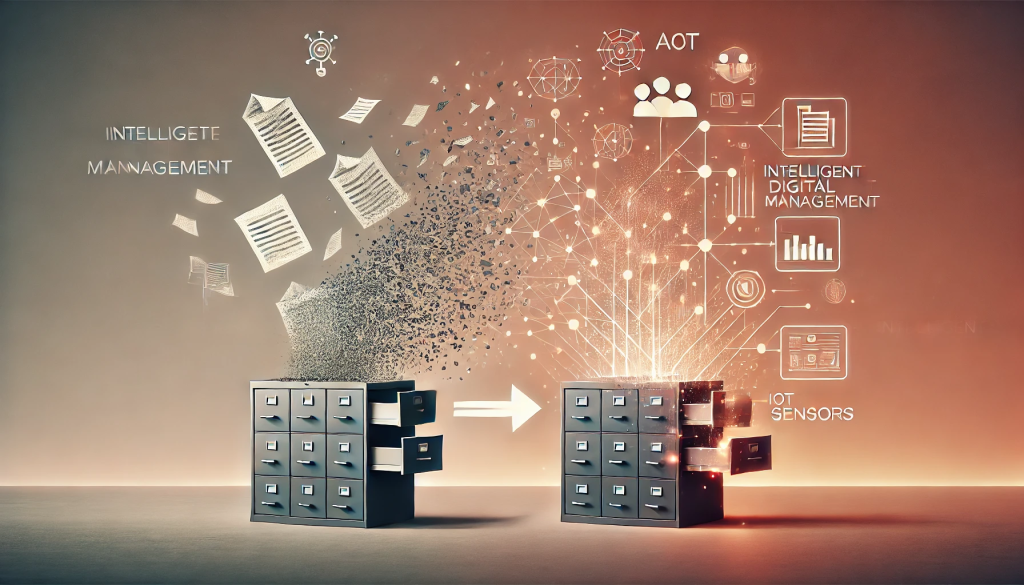In a world obsessed with what’s next, we often miss what’s changing right in front of us.
Document management—that unsexy backbone of organizational life—is transforming in ways that will reshape how value flows through our systems. This isn’t just change; it’s digital transformation at its most consequential.
The filing cabinet gave way to the folder on your desktop. Now that desktop itself is vanishing into the cloud. But this isn’t just about where we store things; it’s about how documents become active participants in our work.
AI isn’t just reading your documents; it’s understanding them. The difference matters. When your system can extract meaning—not just text—it stops being storage and starts being a colleague. True digital transformation happens when the best implementations don’t just find keywords; they surface connections between seemingly unrelated content, creating networks of knowledge rather than collections of files.
IoT is turning documents into living artifacts. Imagine maintenance logs that update themselves based on sensor data, or contracts that activate payment workflows when physical conditions are met. The document becomes less an artifact and more an interface between digital intentions and physical reality—a cornerstone of meaningful digital transformation.
Remote work has exposed the poverty of our document workflows. When we can’t tap someone on the shoulder to ask “where’s that file?”, we discover just how fragile our systems really are. The winners in this space aren’t building better search—they’re eliminating the search altogether through anticipatory systems that bring the right document to you before you realize you need it.
The most profound shift isn’t technological—it’s philosophical. We’re moving from documents as static records to documents as dynamic collaboration spaces. The document isn’t the end product; it’s where the work happens. This is digital transformation that matters.
But here’s the trap: many organizations will invest in new document technology while preserving old document thinking. They’ll build digital filing cabinets instead of knowledge networks. They’ll replace paper forms with PDFs instead of reimagining the workflow entirely.
The question isn’t “How do we manage our documents better?” It’s “What if documents could manage themselves?” That’s the question that drives genuine digital transformation.
The pioneers in this space understand a fundamental truth: documents exist to facilitate connections—between ideas, between people, between intentions and actions. When we optimize for the connections rather than the containers, we change what’s possible.
Two organizations might use the same cloud storage, the same AI tools, the same collaboration software. But the one that thrives will be the one that stops thinking about document management as a cost center and starts seeing it as their nervous system—sensing, responding, adapting, learning. That’s not just digital transformation; that’s organizational evolution.
The future of document management isn’t about better filing. It’s about creating organizational intelligence that’s greater than the sum of its documents.

